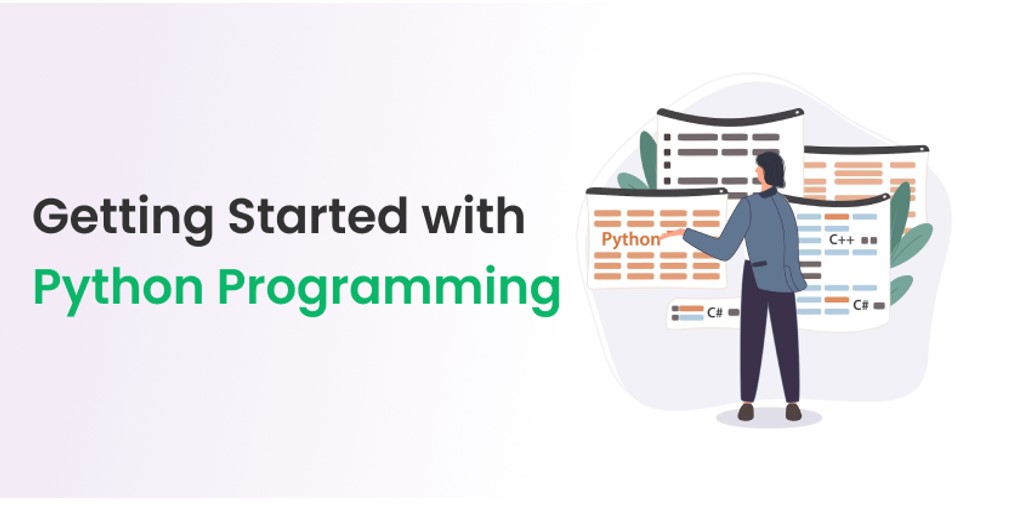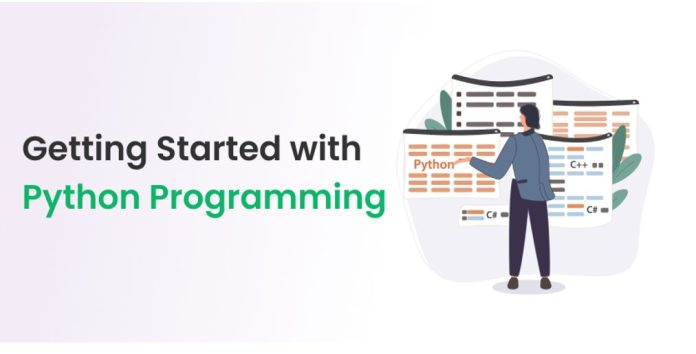Python Programming
Python programming has gained immense popularity in recent years owing to its simplicity, versatility, and powerful capabilities. Whether you are a novice looking to embark on your coding journey or an experienced developer exploring new languages, Python is an excellent choice.
A Python Course is a valuable opportunity to learn one of the most popular and versatile programming languages, equipping you with the skills to develop web applications, analyze data, and build AI systems.
This article aims to provide a comprehensive guide for beginners, offering step-by-step instructions, practical examples, and essential resources to help you kickstart your Python programming adventure.
Understanding Python
Python has become widely renowned as a high-level, interpreted programming language, thanks to its inherent simplicity and readability, which have contributed significantly to its surging popularity. Created by Guido van Rossum in 1991, Python was designed with the philosophy of making code easy to read, write, and maintain. This makes it an ideal language for beginners and experienced developers alike.
One of the key strengths of Python lies in its versatility. It can be used in various domains such as web development, data analysis, scientific computing, machine learning, artificial intelligence, and more. Its extensive library ecosystem provides ready-to-use tools and modules for different tasks, enabling developers to work efficiently and effectively.
Python’s syntax is intuitive and straightforward, making it accessible to beginners. The code is written in a way that resembles plain English, enhancing readability and reducing the learning curve. The use of indentation for code blocks, rather than relying on braces or semicolons, encourages developers to write clean and well-structured code.

In Python, variables do not require explicit declaration, allowing developers to assign values directly. It supports different data types, including numbers (integers, floats, complex numbers), strings (textual data), lists (ordered sequences), dictionaries (key-value pairs), and more. Python also provides extensive support for control flow statements, such as if-else conditions and loops (for and while), allowing developers to make decisions and repeat actions based on specific conditions.
Setting Up Python
Setting up Python on your system is the first step towards starting your Python programming journey. Fortunately, Python is compatible with major operating systems like Windows, macOS, and Linux. Here’s a brief guide to help you get started:
Downloading Python: Visit the official Python website (www.python.org) and navigate to the downloads section. Choose the appropriate version for your operating system (Python 3.x is recommended for beginners) and click on the download link. Ensure you download the installer that matches your system architecture (32-bit or 64-bit).
Installation Process: Locate the downloaded installer file and double-click to run it. The installer will guide you through the installation process. It is recommended to select the option “Add Python to PATH” during installation, as it allows you to run Python from any directory in the command prompt or terminal.
Verifying Installation: After installation, open a command prompt (Windows) or terminal (macOS/Linux) and type “python” followed by the Enter key. This should open the Python interactive shell, indicating a successful installation. You can also check the installed Python version by typing “python –version”.
Choosing an Integrated Development Environment (IDE): While Python can be written in any text editor, using an IDE enhances your coding experience. Popular choices include PyCharm, Visual Studio Code, and IDLE (included with Python installation). Choose an IDE that suits your preferences and install it on your system.
Getting Started: Launch your chosen IDE and create a new Python file. You’re now ready to start coding in Python! The IDE provides a convenient environment with features like code completion, debugging tools, and integrated documentation, making it easier to write and test your code.
Additional Packages: Python has a vast library ecosystem that extends its functionality. Depending on your specific needs, you may want to install additional packages. The package manager “pip” comes bundled with Python. To install a package, open a command prompt/terminal and use the command “pip install package_name”. Replace “package_name” with the name of the package you want to install.
Core Concepts and Syntax
Core concepts and syntax form the building blocks of Python programming. Understanding these fundamental concepts is crucial for writing effective and functional code. Here’s an overview of some core concepts and syntax in Python:
Variables: Variables are used to store data values. In Python, you can assign a value to a variable using the assignment operator (=). Variables can hold different data types, such as numbers, strings, lists, dictionaries, etc.
Data Types: Python supports various data types, including integers (int), floating-point numbers (float), complex numbers (complex), strings (str), lists ([]), tuples (()), dictionaries ({}) and more. Understanding and working with different data types is essential for manipulating and processing data.
Control Flow Statements: Control flow statements help control the execution of code based on certain conditions. The commonly used control flow statements in Python are if-else statements, which allow you to perform different actions based on whether a condition is true or false. You can also use loops like for and while to repeatedly execute a block of code.
Functions: Functions are blocks of reusable code that perform specific tasks. They help in organizing code, reducing redundancy, and improving code modularity. Python allows you to define your own functions using the “def” keyword. Functions can accept parameters and return values.
Object-Oriented Programming (OOP): Python is compatible with object-oriented programming, a paradigm for structuring programmes into objects and classes. While objects are instances of classes, classes determine the attributes and behaviours of objects. OOP ideas like polymorphism, encapsulation, and inheritance let programmers write modular, reuseable code.
Exception Handling: Python provides a robust mechanism for handling errors and exceptions. By using try-except blocks, you can catch and handle errors gracefully, preventing your program from crashing. This helps improve the reliability and robustness of your code.
Modules and Packages: Python has a modular structure, allowing you to import and use functionality from external modules and packages. Modules are Python files containing functions, classes, and variables, while packages are directories that contain multiple modules. Importing modules and packages helps in code reuse and makes it easier to manage larger projects.
Hands-on Examples
To reinforce your understanding of Python programming, here are a few hands-on examples that showcase its practical applications:
- Simple Calculator: Create a program that takes user input for two numbers and performs basic arithmetic operations such as addition, subtraction, multiplication, and division.
- Web Scraper: Build a web scraper using Python’s requests and BeautifulSoup libraries to extract data from a website. For example, scrape product details from an e-commerce site or gather information from a news website.
- CSV Data Analysis: Write a program that reads data from a CSV file, performs analysis or calculations on the data, and presents the results. For instance, calculate average values, find maximum or minimum values, or generate data visualizations.
- Password Generator: Develop a program that generates random passwords based on user-defined criteria, such as length, inclusion of numbers or special characters, and complexity requirements.
Also Read: 5 Daily Life Tools to Take Quick Notes

Disclaimer: This information is for public knowledge.

